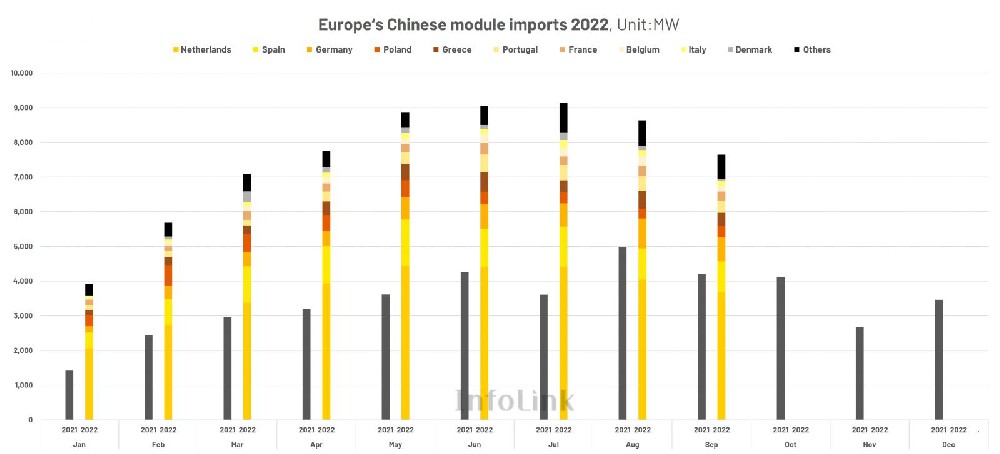Russia-Ukraine conflict and energy crisis-induced surge in energy prices has accelerated energy transition in Europe, driving up demand for renewables. Among renewable energy technologies, solar-plus-storage is more favored by the public and private sectors due to its shorter construction time and diverse application scenarios.
To boost solar installations, the EU has launched several schemes this year, including REPowerEU, EU Solar Energy Strategy, European Solar Rooftop Initiative, and European Solar Initiative, while setting up targets to reach 320 GW of cumulative installed solar capacity by 2025 and 600 GW by 2030, and raises renewables target to 45%. These policies boost solar demand in the region despite lofty module prices resulted from surging prices in the supply chain.

Currently, Europe still relies on Chinese module exports as the continent has yet to build a complete supply chain. China’s customs data shows that Europe imported a total of 67.8 GW of modules from China during the Q1-Q3 period, up 121% YoY. Europe’s transportation hub the Netherlands aside, the top five Chinese module importers are Spain, Germany, Poland, Greece, and Portugal, with Spain importing the most, at nearly 9 GW.
InfoLink’s investigation finds that around one third of the modules exported to Europe in the first half are stockpiled strategically by Chinese Tier-1 manufacturers, instead of orders placed. This means that part of the actual demand will manifest in the second half.
With brighter-than-expected solar market outlook, InfoLink revises up module demand from Europe to 71 GW and optimistically, reach 85 GW. From a conservative perspective, Europe will be consuming the inventory stocked up in the second half of the year, thereby slowing inventory draw. From an optimistic scenario, Europe will continue to import modules in the second half as the inventory stocked up in the first half have been consumed. Factoring in weakened solar demand caused by delivery time, transitional western holidays, and frozen ground in winter for both scenarios, the European solar market is projected to grow robustly, adding 92 GW to 105 GW of annual module demand in 2023.
However, continued labor shortage, logistics hiccup, and instable supply of insulated gate bipolar transistor (IGBT) have led to delayed installations of some projects. In Spain, only 2.7 GW of projects have been connected to the grid as of September, although the country has imported 8.7 GW of modules from January to September. Moreover, currency depreciation also added to the installation delay, despite a decrease in ocean freight rates. Meanwhile, as the EU plans to ban on imports of forced labour goods from China’s Xinjiang region, some end users and banks have started requesting to use products made of materials from regions outside of Xinjiang.
Overall, energy policies and green transition will drive European solar demand growth continuously. Yet, factors that impact the region’s actual installation growth will also emerge as the world’s second largest solar market grows year on year.
